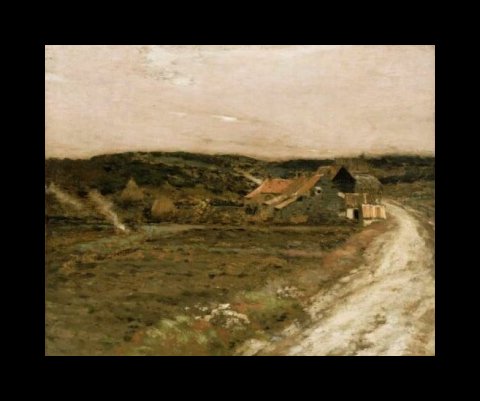Stanislas Henri Jean-Charles Cazin (1841-1901)
Get a Cazin Certificate of Authenticity for your painting (COA) for your Cazin drawing.
For all your Cazin artworks you need a Certificate of Authenticity (COA) in order to sell, to insure or to donate for a tax deduction.
Getting a Cazin Certificate of Authenticity (COA) is easy. Just send us photos and dimensions and tell us what you know about the origin or history of your Cazin painting or drawing.
If you want to sell your Cazin painting or drawing use our selling services. We offer Cazin selling help, selling advice, private treaty sales and full brokerage.
We have been authenticating Cazin and issuing certificates of authenticity since 2002. We are recognized Cazin experts and Cazin certified appraisers. We issue COAs and appraisals for all Cazin artworks.
Our Cazin paintings and drawings authentications are accepted and respected worldwide.
Each COA is backed by in-depth research and analysis authentication reports.
The Cazin certificates of authenticity we issue are based on solid, reliable and fully referenced art investigations, authentication research, analytical work and forensic studies.
We are available to examine your Cazin painting or drawing anywhere in the world.
You will generally receive your certificates of authenticity and authentication report within two weeks. Some complicated cases with difficult to research Cazin paintings or drawings take longer.
Our clients include Cazin collectors, investors, tax authorities, insurance adjusters, appraisers, valuers, auctioneers, Federal agencies and many law firms.
We perform Cazin art authentication, appraisal, certificates of authenticity (COA), analysis, research, scientific tests, full art authentications. We will help you sell your Cazin or we will sell it for you.
Cazin was an intriguing character, not only a renowned painter but also a ceramist of his time. His father was a doctor and it was thought by his family that he would follow in his Father’s footsteps; however his family, seeing his talent for drawing, began to nurture this.
He studied at the Ecole des Dessins under the famous drawing instructor Horace Lecoq de Boisbaudran and went on to teach at the School of Architecture in Paris. It was whilst in Lecoq’s studio that he began a lifelong friendship with the famous figure artist, Leon Lhermitte. He also met and made friends with other notable artists of the day such as Bonvin and Legros.
He painted near Barbizon, and became known as one of the painters of the Barbizon school. Although his earlier paintings were painted in a realist style he was later to be associated with Impressionism. He was particularly well known for his landscapes and it was landscape paintings that he exhibited in the Salon of 1865 and 1866.

Les Mueles
Through his former teacher Horace Lecoq de Boisbaudran he was appointed the Director of the Ecole de Dessin (a school that trained artists for local industries) and also became the Curator of the Musee de Tours in 1868. This position as curator allowed him to travel to other villages and countries to see other art collections and this exposure led to an interest in all forms of art. In 1868 he married the painter and ceramist Marie Guillet who had been a student of Rosa Bonheur.
In 1871 the Franco Prussian war and disagreements with other members of the Museum led him to flee to Britain. Whilst there, he developed a particular interest in ceramics. He had pieces of pottery especially made for him in Britain so that he could decorate them. He was particularly inspired by Asian-influenced ceramics.
He returned to France in 1875 but before doing so he traveled to Italy and Holland. He settled on the Channel cost in a place called Equihen and concentrated on his painting. In 1876 he submitted a major work to the Salon entitled The Boatyard. His paintings until 1888 combined religious themes with contemporary settings and after that he turned to pure landscape painting in a style similar to that of Camille Corot.He also produced paintings which drew on his memories of his native Normandy. In 1880 he was awarded a First Class medal by the Salon.
In 1882 he was awarded the Legion of Honour and in 1890 he was made the Vice President of the Society of Fine Arts.

Cottage in the Dunes

Weary Wayfarers, 1885
In 1893 he held an exhibition in New York. The fact that he was fluent in English made him popular with American collectors. At the time some collectors were paying considerably more for a painting by Cazin than for paintings by Claude Monet. This exhibition was a great success and only served to increase the interest that American collectors and Art Certification Experts of the time had in him. He not only exhibited paintings in America but also exhibited his ceramics. In 1890 the magazine Harpers and Queens devoted an eight page article to his life and his works.
He was particularly popular with the Bostonian collectors and a number of his paintings such as Farm Beside an Old Road and Riverbank with Bathers, now hang in the Museum of Fine Arts in Boston.

Farm Beside an Old Road
As a member of the Barbizon school, paintings by Cazin are certainly in demand and collectable. The fact that there was such a fervent interest in this artist in America makes it highly likely there are some paintings out there by Cazin which have not yet been discovered. Do not forget also that Cazin was a renound ceramist and ceramics by Cazin could be worth almost as much as his paintings,so look again at the signature on that Asian style ceramic vase you have, is it signed by Cazin!
If you believe you own a work of art by Cazin, contact Art Certification Experts. We authenticate, appraise, research and provide Certificates of Authenticity (COA's) for works by Cazin.
Reviews
1,217 global ratings
5 Star
4 Star
3 Star
2 Star
1 Star
Your evaluation is very important to us. Thank you.
